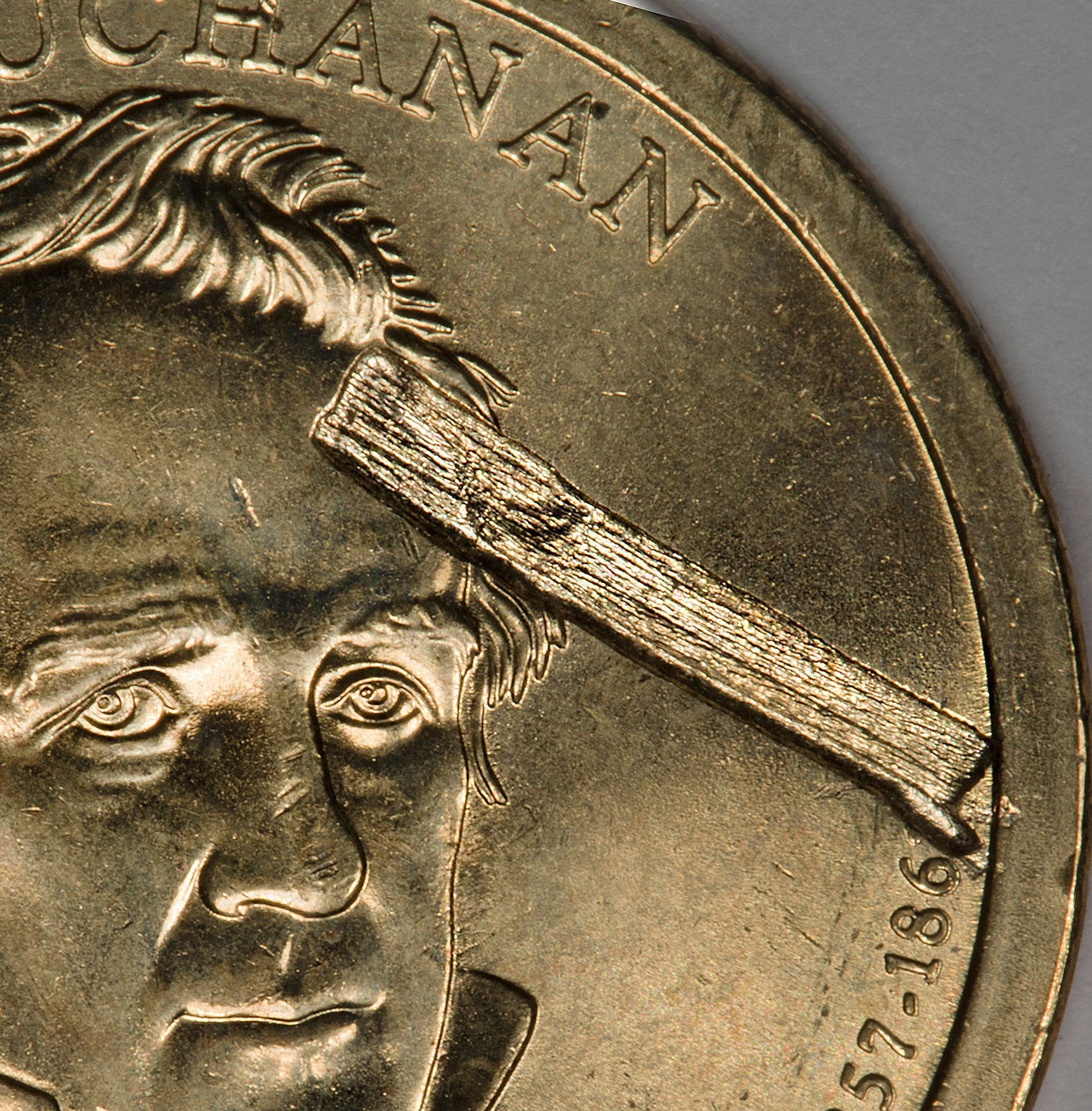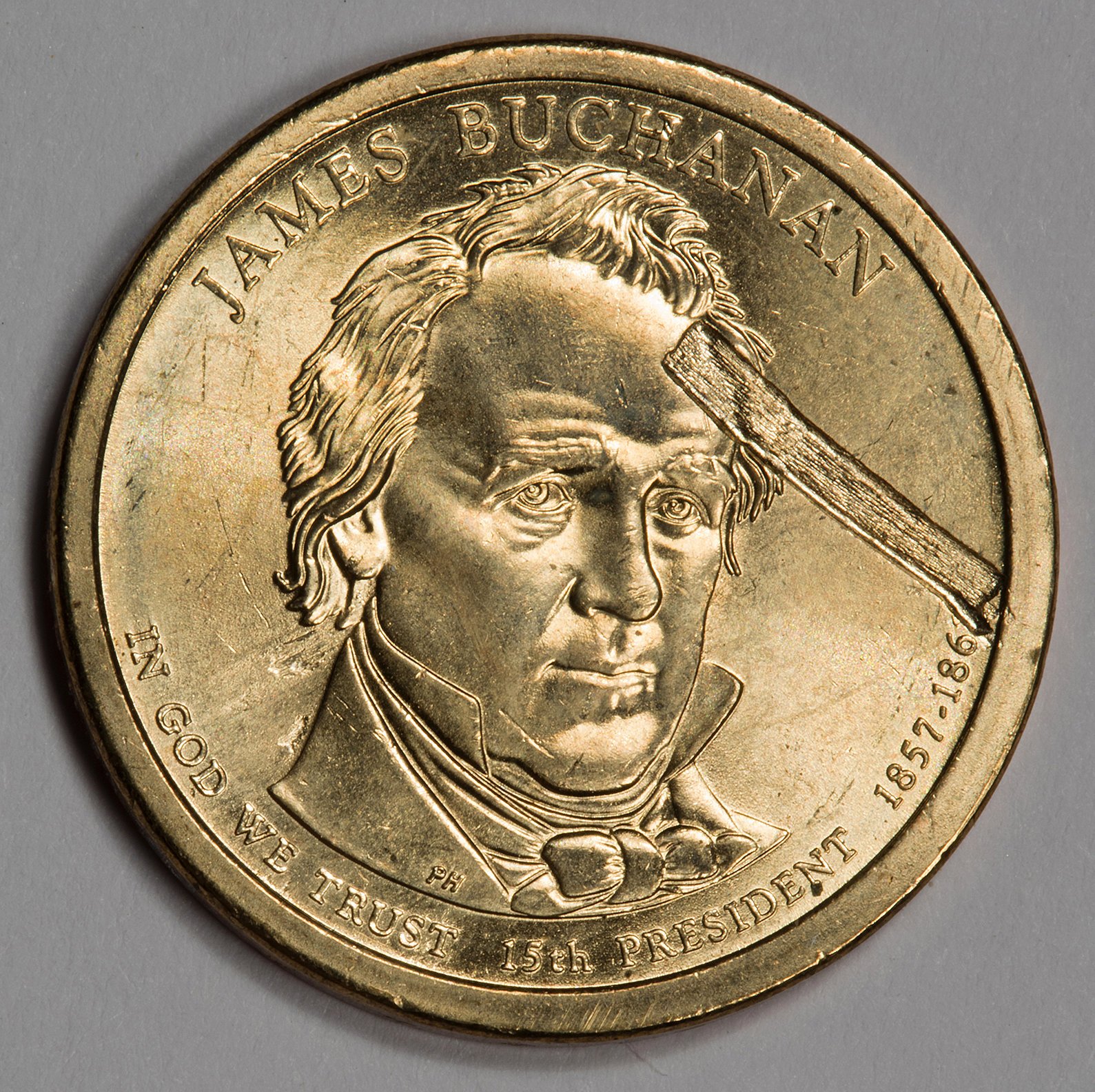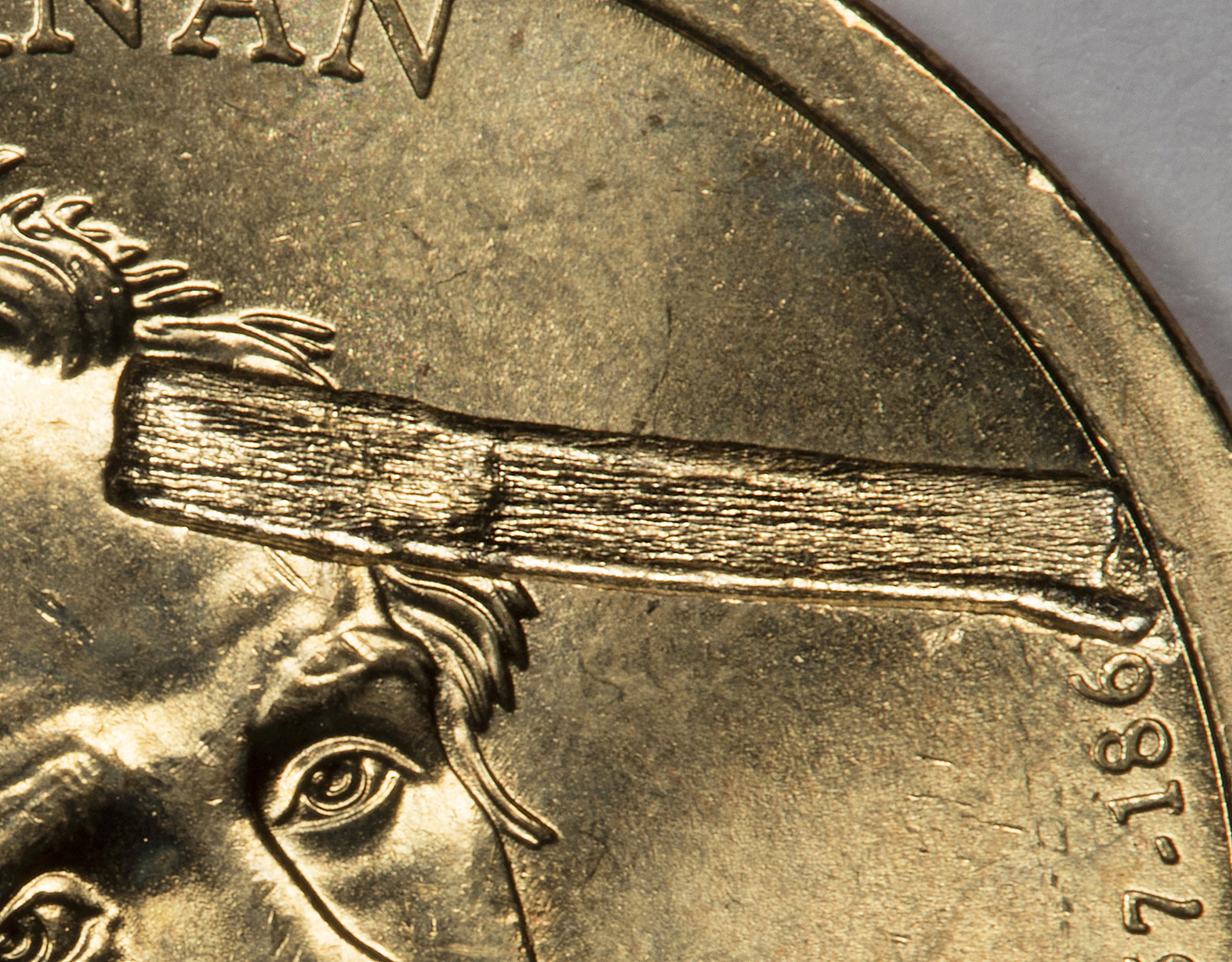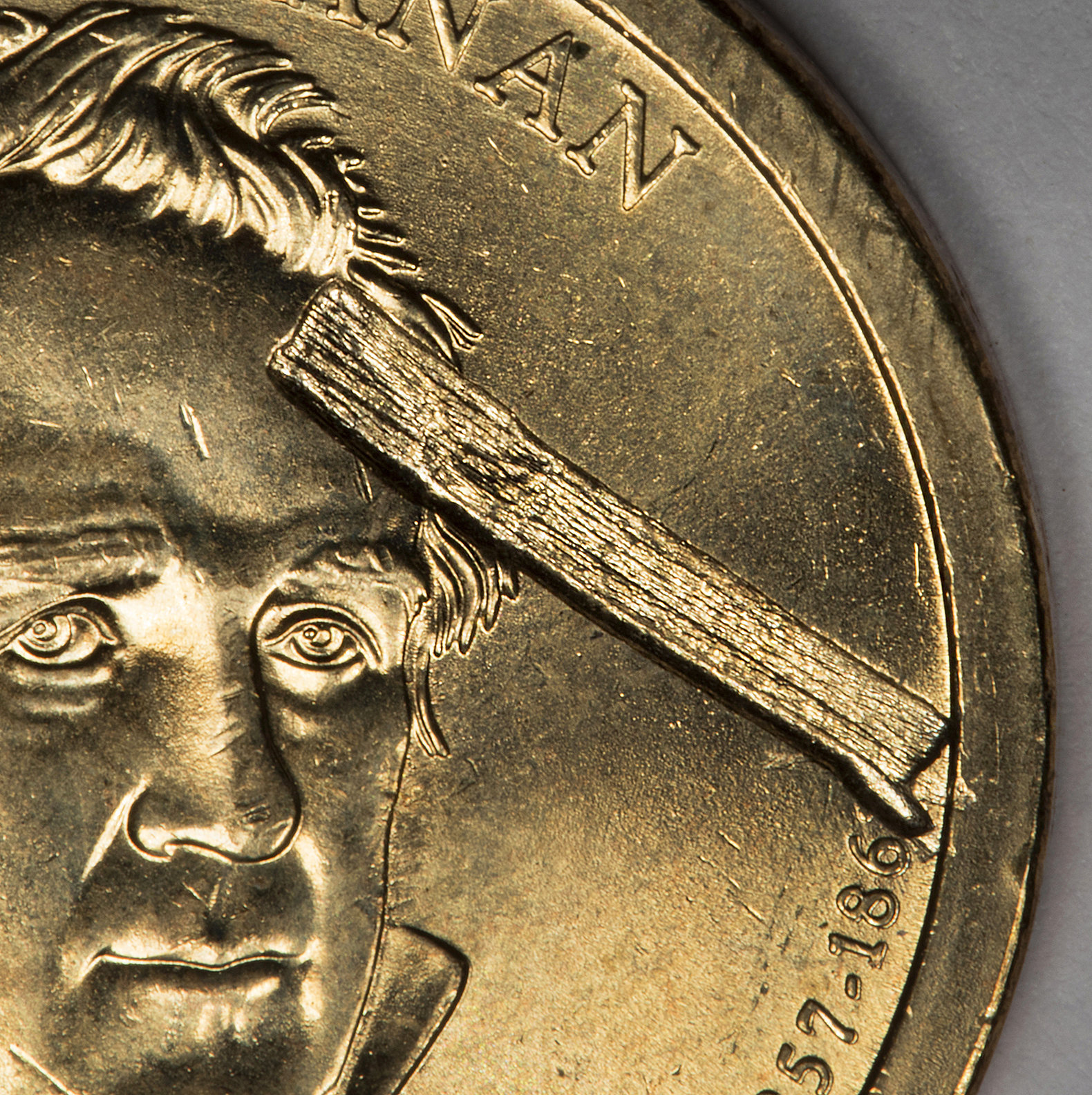Struck Thru What Error? ........... And Will a TPG label it as Such???
 ctf_error_coins
Posts: 15,433 ✭✭✭✭✭
ctf_error_coins
Posts: 15,433 ✭✭✭✭✭




4
 ctf_error_coins
Posts: 15,433 ✭✭✭✭✭
ctf_error_coins
Posts: 15,433 ✭✭✭✭✭




Comments
Carpenter pencil?
"You Suck Award" - February, 2015
Discoverer of 1919 Mercury Dime DDO - FS-101
Well, given Buchanan's limited mental capacity, the defect is appropriately placed. Frankly, there's more interesting detail in the fragment than in the rest of the coin. Too bad the Mint doesn't use it's technology to improve detail rather than smear it about.
Looks like wood to me from here. Strike through wood? I can see a label stating that. Are you looking for something more specific, debri from pencil, pallet, etc?
Awesome coin btw.
WildIdea, I am looking for a very specific term that a TPG (specifically PCGS) would put on a label. I do not want just "Struck Thru". I want "Struck thru x".
I do not want to taint the thread with my opinion of what IMO the strike thru is at this point in time.
Corn husk. Someone brought tamales to the mint that day.
Gotcha, I’m for Strike though wood then. I think going past that as wood from what is guessing. Still, might not even be wood though. Interested in what others say as well.
Definitely looks like wood, with something a bit tubular at the bottom. It might be too big for a carpenter pencil, maybe a golf pencil? It couldn’t have had a metal eraser end. Maybe the tubular line was the lead? Looks like it extended off the coin too.
"You Suck Award" - February, 2015
Discoverer of 1919 Mercury Dime DDO - FS-101
Way too small to be any type of pencil
Toothpick remnant.
UGH
IMO, unless there is positive residue of the item
it was struck thru, there's no way to say much more
than 'Struck Thru' - but I don't see any wood or
plastic residue in the struck thru area.
I do not have them, but would let's say microscopic photography (better than the images that I provided) that shows a definite wood grain pattern be of help in determining 100% that it was indeed wood.
I do understand that you want to be 100% accurate on your labeling.
I do want 100% accuracy as well, so if it is wood, that is what it is and IMO should be labeled as such.
I would think that there could be a way to determine what caused the grain pattern in the strike thru.
I like the toothpick suggestion. The flat kind.
My guess is it came from hardwood pallet when a forklift chipped it off while loading/unloading.
That would make the most sense, IMO
You guys see wood... I see a Bamboo Chute from Chinese food

The thing is I do not think it is all just wood. It appears that one side has a "laminate" type coating. Like it is two different materials. So what has the thickness of a flat tooth pick but is coated on one side with a laminate like plastic or metal?
I'm going to climb out on a limb and say that was definitely not struck through wood (see what I did there?).
There are two separate surfaces there, the bottom edge is solid and rounder, like it was struck through a piece of wire. Whatever caused the elongated grain pattern above that was likely attached to the thin piece of metal that caused the rounded area.
I am thinking it might be a small piece of reinforced tape, one that had either thick strands of thread or wire running through it. Something like duct tape could leave striations similar to those under enough pressure. I assume the adhesive side was against the die, so under a microscope I would look for particles of fabric in the face of the coin.
Sean Reynolds
"Keep in mind that most of what passes as numismatic information is no more than tested opinion at best, and marketing blather at worst. However, I try to choose my words carefully, since I know that you guys are always watching." - Joe O'Connor
Certainly appears to have wood grain... though I cannot say that with certainty. Without residue, I am not sure it can be definitely identified. Cheers, RickO
I like it. I would market it as the "Phineas Gage" variety.
I think "struck thru" without elaboration is the best you're going to get.
Sum ting is wong
(wasn't that a recent thread title?)
"She comes out of the sun in a silk dress,
running like a water color in the rain...."
IMO, NOT wood although that was my first thought. The reinforced tap is a better guess. Note the piece is cut off at both ends. The tape we use has a clear patch between each band of fibers so this piece has to have complete strands throughout.
Struck Through Popsicle Stick Fragment
I’ve an 1812 CBH with a very similar strike through. As I recall it also has flip over double struck edge lettering. I recall square nails were common back then, but square toothpicks?
Fred, Can I get a "Struck Upside the Head" label
Would tape really leave such a high blob of metal like that? Even duct tape would get squished big time. It had to be something more solid. More substance.
Fred is correct imo, as usual. If there isn't any part of whatever it was still retained then all you can do is make an educated guess from the shape, size and pattern of the void, and an educated guess shouldn't get you a specific label attribution..
I'd consider 'Struck Thru Object Obv.'
I was not expecting to see that!
nice find
BHNC #203
That may work altho you know I want wood.
I will most likely bring this to Long Beach next week, see you there.
No offense, but please don't tell me you 'want wood' (lol)
I'll be at Long Beach Wednesday thru Friday - not Saturday, fyi.
Between this thread and one or two others recently I am starting to think there is a whole undercurrent here that most of us are not privy to. I'll be happy to remain blissfully ignorant of the seedy underbelly of the coin forum.


No offense, but please don't tell me you 'want wood' (lol)
I'll be at Long Beach Wednesday thru Friday - not Saturday, fyi.
Fred - we know you mean it!
"She comes out of the sun in a silk dress,
running like a water color in the rain...."
Duck tape has no parallel ridges.
How about plastic coated wire scrap? That the wire is on the bottom side and the plastic coating got squeezed to one side. Not sure why it'd all go to one side like that, but just trying to brainstorm an answer.
Or how about that flat wide wire - not sure if speaker wire or other - but flat with copper filaments inside.
Still, it is a cut piece of something. Maybe a piece of plastic strapping? (The kind used to wrap and seal some boxes, heat sealed at the ends).
Can I get a "Struck Thru Birthday Candle"



How about electrical wire, like on a telephone or lamp. The plastic sleeve is the bulk of the impression, and the raised areas in the middle are the center rib(s) found on those types of cords. The small burst at the end is the exposed wire ends.
Someone clipped off the end of a cord to rewire something and it fell into the press.
That's my story, anyway.